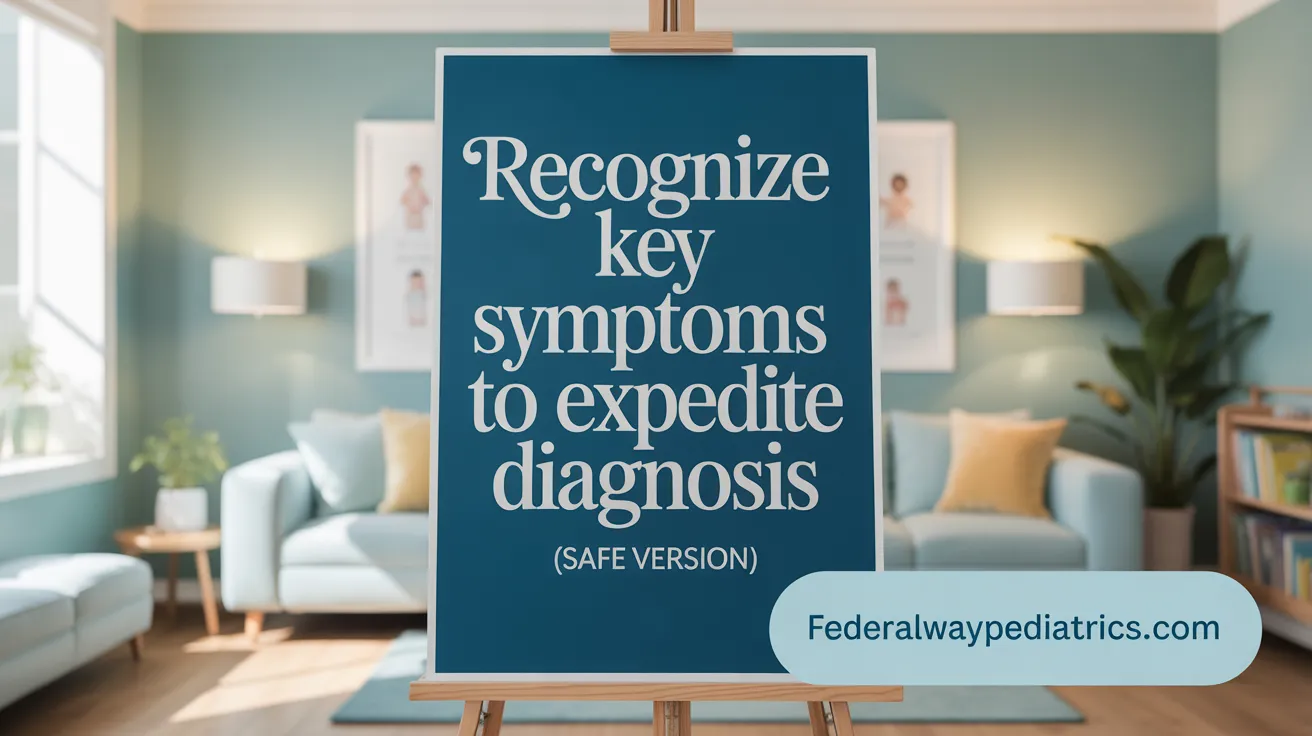Understanding Pediatric Abdominal Cramping
Abdominal cramping in children is a common yet complex complaint experienced in primary care and emergency settings. While often benign and self-limited, abdominal pain in pediatric patients can sometimes signal serious underlying conditions requiring urgent care. This article provides an in-depth exploration of the causes, clinical features, diagnostic approaches, and management strategies for pediatric abdominal cramping, equipping caregivers and healthcare professionals with essential knowledge to support affected children effectively.
Common Causes and Differential Diagnoses of Pediatric Abdominal Pain
What are the common causes and differential diagnoses of pediatric abdominal pain?
Pediatric abdominal pain can result from a wide range of conditions, from minor gastrointestinal issues to urgent surgical emergencies. Common causes include benign conditions such as gastroenteritis, constipation, food intolerances like lactose intolerance, and functional abdominal pain, which is often related to nerve sensitivity without an underlying tissue damage. Meanwhile, serious conditions requiring prompt intervention include appendicitis, bowel obstruction, intussusception, volvulus, and complications from hernias.
The differential diagnoses vary with age. In infants and toddlers, intussusception and congenital anomalies are frequent concerns, often presenting with episodic colicky pain and vomiting. In adolescents, gynecological or pregnancy-related causes, such as ovarian torsion and ectopic pregnancy, are important considerations, especially in females.
Other important causes encompass urinary tract infections, which can mimic abdominal pain, as well as mesenteric lymphadenitis, often secondary to infections, and hernias that may cause localized pain.
Diagnosis relies heavily on thorough history-taking, focusing on pain quality, location, associated symptoms, and any recent illnesses or trauma. Physical exam aims to identify signs such as rebound tenderness, rigidity, or palpable masses. Laboratory tests, including a complete blood count, inflammatory markers (ESR or CRP), urinalysis, and pregnancy tests in females of reproductive age, help to evaluate causes. Ultrasonography is typically the imaging modality of choice due to its safety and effectiveness in visualizing abdominal organs. In some cases, additional tests like X-rays, CT scans, or endoscopy may be necessary to pinpoint the cause and determine if surgical intervention is required.
Timely recognition and differentiation of benign versus potentially life-threatening causes are essential to ensure appropriate management and urgent referral when necessary.
Clinical Features and Symptoms of Abdominal Pain in Children

What are typical symptoms and clinical features of abdominal pain in children?
Children can present with a wide range of symptoms when experiencing abdominal pain. The pain may be localized to one area or diffuse, affecting the entire abdomen. The character of the pain varies; it can be cramp-like, sharp, dull, or aching, which often reflects the underlying cause.
Common accompanying symptoms include nausea, vomiting, fever, constipation or diarrhea, and a reduced appetite. These symptoms help guide the clinician toward specific diagnoses, such as infections or surgical causes.
The type and quality of pain provide valuable clues: visceral pain caused by internal organs' stretching or inflammation is typically dull and poorly localized, while parietal pain, arising from irritation of the abdominal lining, tends to be sharp and well localized.
Physical exam findings are crucial. Signs like rebound tenderness, rigidity, absent bowel sounds, or a palpable mass suggest a more severe or surgical condition such as appendicitis or bowel obstruction.
The onset, duration, and pattern of pain—whether it is intermittent or continuous—and associated symptoms form an essential part of the assessment. For example, sudden sharp pain that worsens quickly might indicate a surgical emergency.
In infants and young children, symptoms can be atypical, sometimes mimicking sepsis or other systemic illnesses. Careful observation and a high index of suspicion are vital, especially when signs such as lethargy, inconsolability, or abnormal vital signs are present.
Overall, recognizing the pattern of symptoms and exam findings enables timely diagnosis and management, reducing the risk of complications.
Diagnostic Evaluation of Pediatric Abdominal Cramping

Role of history and physical examination
The diagnostic process begins with a thorough history and physical exam. Clinicians focus on understanding the pain's location, character (such as cramp-like or generalized), duration, frequency, and any associated symptoms like vomiting, diarrhea, or fever. Examining vital signs and inspecting the abdomen for tenderness, distension, or signs of peritonitis helps identify urgent cases requiring immediate intervention. Observing for signs such as rebound tenderness, rigidity, or absent bowel sounds can suggest surgical emergencies like appendicitis or bowel perforation.
Laboratory investigations recommended
Initial laboratory tests provide vital clues for diagnosis. A complete blood count (CBC) assesses for infection or inflammation; elevated white blood cells can point to appendicitis or other infections. Inflammatory markers like ESR or CRP help evaluate ongoing inflammation. Urinalysis screens for urinary tract infections that may mimic abdominal pain. For adolescent girls, a pregnancy test rules out ectopic pregnancy. These tests help exclude common non-surgical causes and support identification of infectious or inflammatory processes.
Imaging modalities with emphasis on ultrasonography
Ultrasound is the imaging modality of choice due to its safety profile—no radiation—and its high effectiveness in assessing various abdominal conditions. It helps visualize the appendix, gallstones, intussusception, and other structural abnormalities. When ultrasound results are inconclusive, or complications are suspected, computed tomography (CT) scans may be utilized cautiously to obtain detailed views, balancing diagnostic benefits against radiation risks.
Use of diagnostic scoring systems for appendicitis
For suspected appendicitis, clinicians often employ validated scoring tools like the Pediatric Appendicitis Score and the Alvarado score. These systems incorporate elements such as symptoms, physical findings, and laboratory results to stratify children into low, intermediate, or high probability groups. This approach aids decision-making regarding the need for further investigation or surgical consultation, reducing unnecessary imaging and surgeries.
| Diagnostic Step | Purpose | Typical Tests | Special Notes |
|---|---|---|---|
| History & Physical | Identify urgent or surgical signs | N/A | Focus on pain features and systemic signs |
| Blood Tests | Detect infection or inflammation | CBC, ESR, CRP | Elevated levels support diagnosis but are nonspecific |
| Urinalysis | Rule out urinary causes | Urinalysis | Important in all age groups, especially adolescent females |
| Imaging | Visualize abdominal structures | Ultrasound (preferred), CT scan | Ultrasound for most cases; CT reserved for complex cases |
| Scoring Systems | Risk stratification for appendicitis | Pediatric Appendicitis Score, Alvarado score | Guides further testing or management |
This comprehensive approach ensures that evaluation is accurate, minimally invasive, and tailored to the child's presentation, leading to timely and appropriate management.
Diagnosing and Managing Functional Abdominal Pain in Children

What is functional abdominal pain and how is it diagnosed?
Functional abdominal pain (FAP) in children is a chronic or recurrent condition characterized by stomach discomfort that cannot be explained by any detectable abnormality after thorough physical examination and testing. According to the Rome IV criteria, it is diagnosed when the pain occurs frequently—at least four times a month—and persists for at least two months. The pain often occurs around the belly button (periumbilical area) and may be constant or come and go.
To diagnose FAP, doctors rely primarily on detailed history-taking and physical examination. They assess the child's symptoms, including pain duration, location, intensity, and any associated symptoms like nausea or changes in bowel habits. Most children with FAP have normal blood tests, urine, and stool results. Additional investigations such as ultrasound or endoscopy are only necessary if alarm signs—like blood in stool, weight loss, or signs of growth delay—are present.
What are common symptoms, triggers, and psychosocial factors?
Symptoms of functional abdominal pain include abdominal discomfort, nausea, vomiting, bloating, and bowel pattern changes such as diarrhea or constipation. Children often report pain around the belly button, which can be sudden or gradual, constant or fluctuating. Triggers often involve diet, stress, recent infections, or changes in the gut microbiome.
Psychosocial factors play a significant role. Anxiety, depression, traumatic experiences, and family history of gut-brain disorders can contribute to FAP. These elements can lead to heightened nerve sensitivity in the gut, known as visceral hypersensitivity, which makes the stomach more reactive to normal stimuli.
How to evaluate to exclude organic causes?
Evaluation aims to distinguish FAP from organic or serious conditions. The process involves a careful history, physical exam, and targeted tests based on symptoms.
Common tests include:
- Blood tests (to check for signs of infection, anemia, or inflammation)
- Urinalysis (for urinary infections)
- Stool tests (to detect infections or blood)
- Imaging studies, such as ultrasound or X-ray (if indicated)
Red flag signs, such as blood in stool, unexplained weight loss, severe recent pain, or delayed growth, warrant further testing and specialist referral. These help to rule out conditions like inflammatory bowel disease, anatomical abnormalities, or infections.
What are the management strategies?
Management of FAP is usually multidisciplinary and emphasizes reassurance and education. It involves addressing the biological, psychological, and social factors contributing to the pain.
Key approaches include:
- Providing reassurance that the pain is not due to serious disease
- Dietary modifications, such as low-FODMAP diets, to identify and reduce triggers
- Psychological therapies, notably cognitive-behavioral therapy, which can reduce stress and improve coping skills
- Pharmacological treatments like antispasmodics or low-dose antidepressants for symptom relief
- Encouraging normal activities and reinforcing healthy sleep and eating habits
Additional therapies like relaxation exercises, guided imagery, and biofeedback can help children manage stress and pain.
Most children experience an improvement in symptoms within weeks to months with comprehensive care. Regular follow-up ensures symptoms are managed and any evolving issues are addressed.
| Aspect | Details | Additional Notes |
|---|---|---|
| Diagnosis | Clinical history, physical exam, selective testing | Use of Rome IV criteria; red flag signs prompt further testing |
| Symptoms | Periumbilical pain, nausea, vomiting, bowel changes | Pain can be sudden, fluctuating, around the navel |
| Triggers | Diet, stress, infections, microbiome | Psychosocial factors heavily implicated |
| Management | Reassurance, diet, therapy, medications | Multidisciplinary and tailored to the child |
More info search query: "Functional abdominal pain diagnosis and treatment in children"
Treatment Strategies for Pediatric Abdominal Cramping and Pain
What are the recommended treatment options for abdominal cramps and pain in children?
Treatment of abdominal pain in children depends largely on its cause, but there are common principles applied for symptomatic relief and management.
Most children benefit from basic supportive measures such as maintaining hydration. This involves offering fluids like water, oral rehydration solutions, or electrolyte-balanced drinks. For those with mild pain and discomfort, a bland diet comprising foods such as rice, bananas, and toast can help ease symptoms. It is wise to avoid irritants like spicy foods, high-fat meals, and carbonated beverages.
Comfort measures also include gentle abdominal rubbing, using warm compresses, and encouraging rest. These strategies can help soothe mild pain episodes.
Pain control is an important aspect. Paracetamol (acetaminophen) is considered safe to manage mild to moderate pain. If necessary, opioids can be used judiciously for severe pain, but always under medical supervision to prevent masking symptoms that need urgent attention.
In cases of chronic or functional abdominal pain, psychological and behavioral therapies are proven beneficial. Techniques such as cognitive-behavioral therapy, relaxation exercises, guided imagery, and breathing techniques help children cope better with pain and reduce stress-related symptoms.
Dietary modifications, including identifying and avoiding potential trigger foods, play a role in managing some causes of chronic pain such as irritable bowel syndrome or food intolerances.
Parents should be vigilant for warning signs that require emergency care, such as blood in stool or vomit, severe or worsening pain, inability to pass stool, or signs of dehydration like dizziness or lethargy. In such cases, prompt medical evaluation is necessary.
Overall, an individualized approach balancing symptom relief, activity encouragement, and psychosocial support leads to better outcomes in pediatric abdominal cramping and pain.
| Management Aspect | Recommendations | Additional Notes |
|---|---|---|
| Hydration and Diet | Fluids, oral rehydration solutions, bland foods | Avoid irritants like spicy foods and carbonation |
| Pain Control | Paracetamol, cautious use of opioids | Use under medical supervision to prevent masking serious issues |
| Behavioral & Psychological Therapies | Cognitive-behavioral therapy, relaxation, guided imagery | Especially for functional abdominal pain |
| Emergency Signs | Blood in stool/vomit, severe pain, inability to pass stool, dehydration | Seek urgent medical care as needed |
This comprehensive approach aims to alleviate pain, prevent complications, and support psychological well-being in children suffering from abdominal cramping.
Recognizing Surgical Emergencies and Urgent Conditions in Pediatric Abdominal Pain

Signs warranting immediate intervention
Children experiencing severe, worsening, or sudden onset of abdominal pain should be evaluated promptly. Critical signs include an inability to pass stool or gas, blood in stool or vomit, a rigid or distended abdomen, severe tenderness, and signs of shock such as pale, clammy skin and weak pulse. Any indication of injury or trauma, difficulty breathing, or symptoms like fever combined with intense pain also necessitate emergency care.
Common surgical causes by age
The causes of surgical abdominal pain vary with age. Infants and toddlers are primarily concerned with intussusception, congenital anomalies, or necrotizing enterocolitis. In school-aged children and adolescents, appendix-related issues such as appendicitis are most common. Additionally, conditions like volvulus, incarcerated hernia, and testicular torsion are significant. Recognizing age-specific symptoms helps prioritize urgent diagnostics.
Use of clinical scoring and imaging to identify surgical pathology
Prediction scores like the Pediatric Appendicitis Score and Alvarado score assist clinicians in estimating the likelihood of appendicitis, guiding the need for further testing. Ultrasonography is the preferred initial imaging modality due to its safety profile and proven effectiveness. CT scans may be reserved for inconclusive ultrasound results or when detailed visualization of complex conditions such as volvulus or abscesses is needed.
Urgent management and referral protocols
Children with suspected surgical emergencies should be stabilized with IV fluids, analgesia, and NPO (nothing by mouth) status. Rapid referral to a pediatric surgical specialist or emergency department is crucial for definitive diagnosis and intervention. Early surgical consultation is essential if signs of peritonitis, bowel obstruction, or complications are present.
| Aspect | Approach | Additional Notes |
|---|---|---|
| Signs | Severe pain, peritonitis signs, shock | Immediate care needed |
| Causes | Appendicitis, intussusception, volvulus, hernia | Age-specific considerations |
| Diagnosis | Clinical scoring, ultrasound, CT | Use targeted tests based on presentation |
| Management | Stabilization, prompt surgical referral | Do not delay for extensive testing |
Recognizing these indicators and acting swiftly can greatly impact outcomes in pediatric abdominal emergencies.
Practical Guidance for Caregivers and Healthcare Professionals
When to seek medical attention
Children experiencing persistent, severe, or worsening abdominal pain should be evaluated urgently. Warning signs include inability to pass stool, blood in stool or vomit, high fever, difficulty breathing, injury to the abdomen, or symptoms like severe pain that wakes the child from sleep. Immediate medical care is essential in these cases to rule out serious conditions such as appendicitis, intestinal obstruction, or torsion.
Home care recommendations
For mild abdominal discomfort, caregivers can offer fluids and mild foods, avoiding irritants like spicy or greasy foods. Warm compresses may help ease muscle tension, and over-the-counter pain relievers like paracetamol can be used safely. Monitoring the pain's duration and severity helps determine if professional evaluation is needed.
Monitoring and follow-up strategies
Maintaining a pain diary recording the time, location, character, and triggers of pain can aid diagnosis. Regular follow-up with healthcare providers is advised if symptoms persist, worsen, or if new symptoms develop. For children with functional or chronic abdominal pain, multidisciplinary approaches involving psychological and nutritional support improve outcomes.
Importance of multidisciplinary approaches and specialized programs
Children with ongoing abdominal pain benefit from a team of specialists, including gastroenterologists, psychologists, and dietitians. Programs like the Functional Abdominal Pain Program at children’s hospitals offer comprehensive care, combining medical treatment, behavioral therapy, and advanced techniques like neurostimulation. This holistic approach ensures tailored management, addressing both physical and emotional aspects of abdominal pain.
Concluding Insights on Pediatric Abdominal Cramping Diagnosis and Treatment
Pediatric abdominal cramping presents a diagnostic challenge with a broad spectrum of potential causes ranging from benign to life-threatening conditions. A systematic approach combining detailed clinical evaluation, appropriate laboratory and imaging studies, and awareness of red flag signs is crucial for timely diagnosis. Functional abdominal pain represents a significant subset requiring holistic management that addresses both physiological and psychological factors. Treatment should aim to alleviate symptoms, maintain normal activities, and provide reassurance. Caregivers and healthcare professionals must collaborate within multidisciplinary frameworks to optimize outcomes and ensure comprehensive care. Prompt recognition of emergencies and adherence to evidence-based guidelines can significantly improve prognoses for children experiencing abdominal pain.
References
- Acute Abdominal Pain in Children - AAFP
- Abdominal pain - children under age 12 - MedlinePlus
- Pediatric Chronic Abdominal Pain | Doernbecher Children's Hospital
- Abdominal pain in children | Better Health Channel
- Functional Abdominal Pain in Children | ACG
- Acute Abdominal Pain in Children - PMC
- Chronic Abdominal Pain in Childhood: Diagnosis and Management
